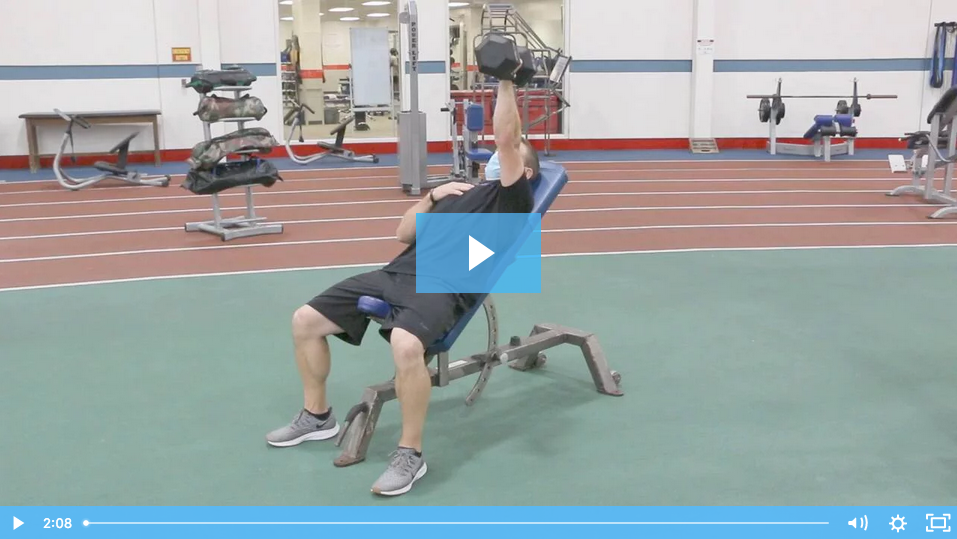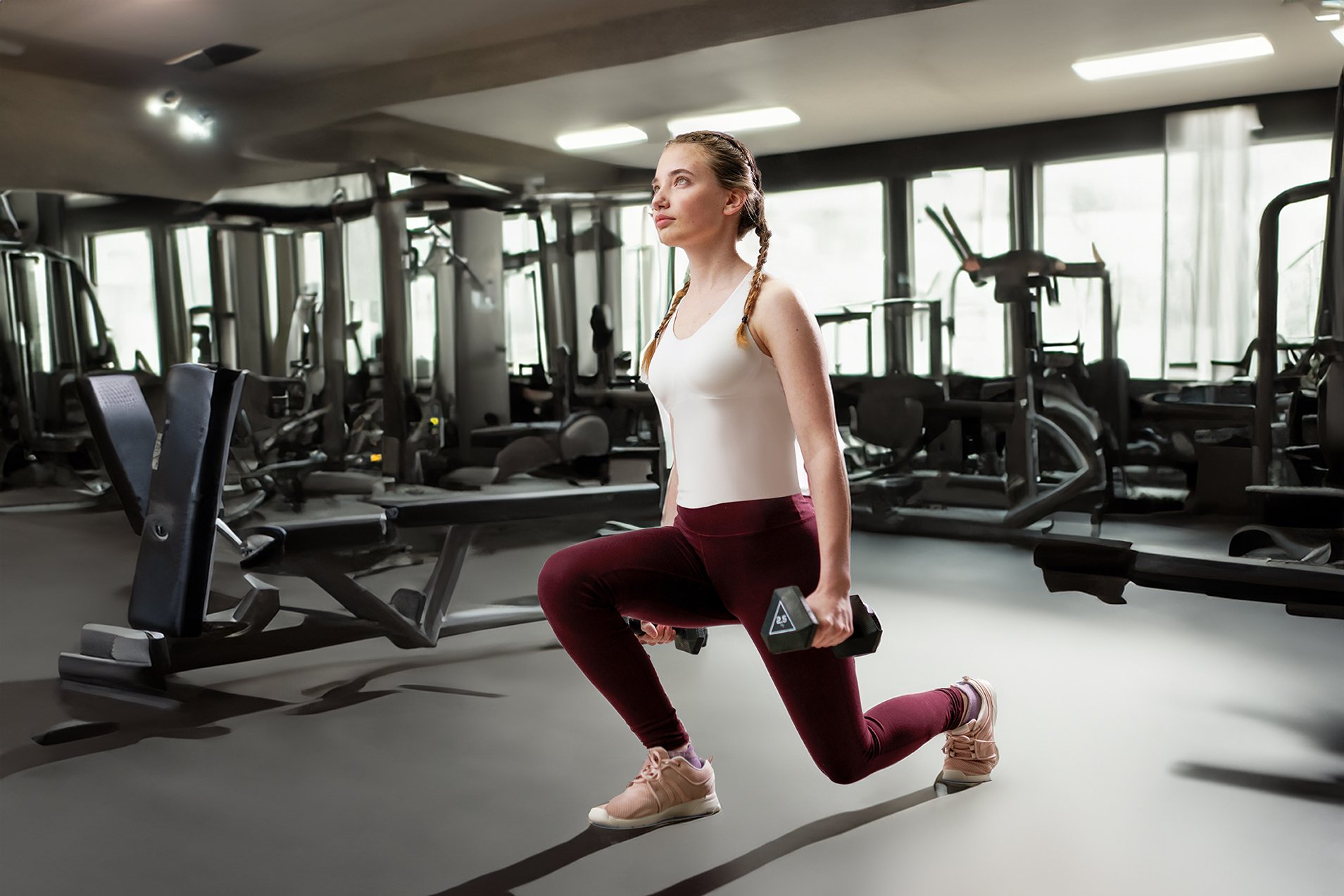
If you have taken an extended break from your workout routine, your return to the gym will likely mean a return to the program that you were originally doing before your hiatus. Exercise selection, reps, and rest periods may be altered slightly after time off; however, eventually you will be back to your pre-break strength and power, among other athletic traits. When you think about that program and how it got you to the point you are at or will be in the near future, do you also think about the steps you will take to further advance your abilities? I’m here to break down a few ways specifically within the muscle that may help give you the variety to your program you are looking for.
There are three main types of muscular contractions that can happen, each of which serves a specific purpose for muscular growth, strength, and power. They are
- Concentric
- Isometric
- Eccentric
Concentric
Concentric muscular contractions are generally the most common type that individuals focus on during their training sessions. Concentric contractions involve the shortening of the muscle during an exercise. If you imagine a lift, say the bench press, the act of pushing the weight up from your chest actively shortens the muscle. The pulling of a bent-over row or the ascent of the barbell back squat all utilize this contraction. An uncommon variation would be to slow down the movement, for example slowing the pulling movement of the bar during a Lat Pulldown. If it normally takes you 1–2 seconds to pull down the bar, try a 5-count with the same weight. The intensity will greatly increase.
Isometric
Isometric contractions are an underrated variation that people most often forget about during workout planning. Instead of a shortening movement like the concentric contraction, the isometric contraction actually involves the muscle staying at the same length during the work period. A simple variation of this contraction is a wall sit. The muscle never changes length, but the tension and effort build over time.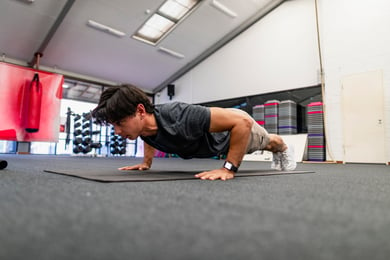
But the quality of this contraction is found in much more than just wall sits. Almost any exercise can utilize this method. Here are a few of my favorite variations using isometric contractions. The intensity of the holds in these lifts can be dictated by either the amount of weight or the time you hold it for.
- Split Squat Holds (hold split squat in down position with knee off the ground)
- Push-Up Holds (hold push-up in the “down” position; try at different heights!)
- Pull-Up Holds (either chin over bar or with arms hanging straight)
Eccentric
The last contraction variation in this trio is the eccentric contraction. This is commonly thought of as the lowering or lengthening of the muscle during an exercise. Going back to the bench press example earlier, the bar lowering to the chest would be the eccentric contraction. Where this method is most useful is during time-under-tension exercises where you increase the amount of time that you lengthen the muscle during the lift. These are all about control and can get quite intense.
Similar to the isometric contractions, time is everything. For example, when you do a step-up and are coming down off of the box, try to control for 3–5 seconds before your foot hits the ground instead of coming down right away. Here are a few of my favorite variations on eccentric contraction exercises:
- Incline Dumbbell Press (lowering the weight slowly and raising it at a normal pace)
- Slider Leg Curls (pushing feet out in a slow and controlled motion)
- Glute Ham Raises (slow on the way down)
***
The variations are not limited to this list. Feel free to get creative with any of your favorite exercises when trying out the different muscular contractions. Remember, time is your friend with any method you choose and can match any intensity you are trying to achieve.
This blog was written by Alex Soller, Athletic Performance Coach and NIFS trainer. To find out more about the NIFS bloggers, click here.

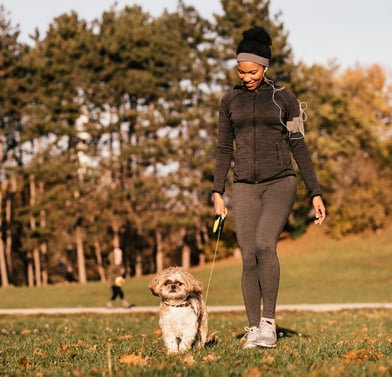 We have all heard the old sayings about fresh air and how it affects your well-being. It usually comes in the form of sage advice and sounds like something you can take with a grain of salt, but is there truth to this advice? There are times in our lives when we might not even see the sun, whether it’s because of our careers, lifestyles, or by choice. Although these reasons may have validity, there is some very good research that supports outdoor activities as a viable way to improve your overall health.
We have all heard the old sayings about fresh air and how it affects your well-being. It usually comes in the form of sage advice and sounds like something you can take with a grain of salt, but is there truth to this advice? There are times in our lives when we might not even see the sun, whether it’s because of our careers, lifestyles, or by choice. Although these reasons may have validity, there is some very good research that supports outdoor activities as a viable way to improve your overall health.
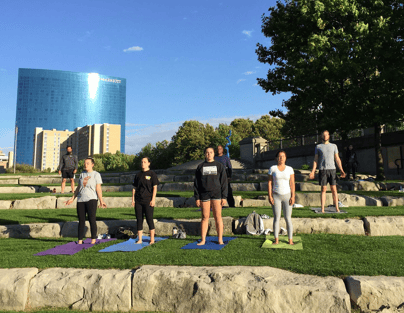 Do you want to be part of a community and hold yourself accountable while working out? Group fitness classes just might have what you are looking for!
Do you want to be part of a community and hold yourself accountable while working out? Group fitness classes just might have what you are looking for! 
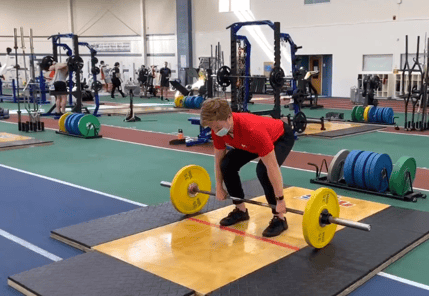 If you are like me, with a busy, on-the-go lifestyle, you probably don't have more than an hour to get inside the gym and train. Lucky for you, that’s okay!
If you are like me, with a busy, on-the-go lifestyle, you probably don't have more than an hour to get inside the gym and train. Lucky for you, that’s okay!  There’s always an assumption that fitness professionals work out 2 hours a day, 7 days a week. They eat healthy all day long and never have any junk food. Basically people think that we are perfect and never make mistakes. I have been in the health and fitness industry for more than 10 years now and I can honestly say that couldn’t be further from the truth.
There’s always an assumption that fitness professionals work out 2 hours a day, 7 days a week. They eat healthy all day long and never have any junk food. Basically people think that we are perfect and never make mistakes. I have been in the health and fitness industry for more than 10 years now and I can honestly say that couldn’t be further from the truth. During this 2020 Coronavirus Pandemic, have you found yourself looking out your window and wishing that you could be enjoying sports, recreational activities, and exercising? In the not-so-distant past, we could spend seemingly unlimited time playing pick-up games of basketball with our best buds or head down to the gym and join our favorite yoga class, packed with like-minded individuals. Unfortunately, with social distancing being more and more prevalent in society, we have to not only limit contact sports, but also allow enough space so that others can safely participate in the activity, leaving classes no choice but to limit size or cancel altogether.
During this 2020 Coronavirus Pandemic, have you found yourself looking out your window and wishing that you could be enjoying sports, recreational activities, and exercising? In the not-so-distant past, we could spend seemingly unlimited time playing pick-up games of basketball with our best buds or head down to the gym and join our favorite yoga class, packed with like-minded individuals. Unfortunately, with social distancing being more and more prevalent in society, we have to not only limit contact sports, but also allow enough space so that others can safely participate in the activity, leaving classes no choice but to limit size or cancel altogether. 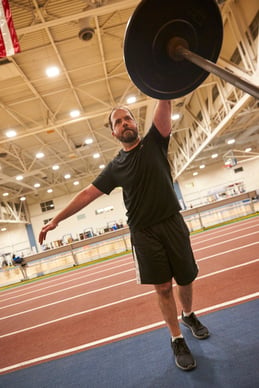 In my experience over the years working with folks from all walks of life to help improve their strength, mobility, performance, and overall fitness I have found that so many suffer from immobility in two major joints: the ankle and the shoulder, which is the focus of this piece. Lifestyle, occupation, inactivity, and overtraining are all culprits robbing so many of healthy range of motion in the shoulder and shoulder girdle.
In my experience over the years working with folks from all walks of life to help improve their strength, mobility, performance, and overall fitness I have found that so many suffer from immobility in two major joints: the ankle and the shoulder, which is the focus of this piece. Lifestyle, occupation, inactivity, and overtraining are all culprits robbing so many of healthy range of motion in the shoulder and shoulder girdle. 